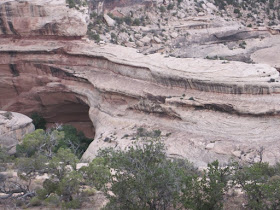
Rising from the immense lakes and whispering fog, the mountains of Glacier National Park are some of the most beautiful in the world. Jagged and rugged, sharp points pierce the big blue Montana sky. Nestled amongst the peaks and valleys are the parks namesake features - the glaciers themselves. Not as abundant as 50 years ago, every visitor still has the opportunity to see one of the last great, ever melting wonders of the west.
We started our Glacier adventure on the East side of the Park - intending to drive to the West side via the brilliantly engineered Going to the Sun Road. However, even though it was late June, the road was not fully open during our visit and thus we drove and far up on the East side as we could, and as far up on the West side as we could. It's safe to note that each side of the Park are very different. St. Mary's is the best starting point and base for your East side visit. The Park Cafe is excellent as the pie might be the best I've ever had. Also check out Full Quiver Espresso stand for coffee in the morning - fresh and friendly. We camped at Rising Sun and found it to be a great spot to camp. The East side is much quieter and we enjoyed that. On the East side is the famous pull off from the Going to the Sun Road to photograph Wild Goose Island on Saint Mary Lake.




The Many Glaciers area of Glacier is striking in its beauty and charm. We saw a brown bear mother with her cub along the road. Many great hikes start around Many Glacier, however during our visit it had been so cold and because of recent snow many of the trails were closed.



Make sure to visit St. Mary's Falls, it was an incredible water fall and a pleasant, strolling walk through the forest down to it.



Spend time to stop at the Sunrift Gorge, a dark crack in the earth where water gushes downstream at a rapid rate.

Running Eagle falls in the Two Medicine section of the park is a must see. It's harder to tell why they used to call this "Trick Falls" but if you look closely you can see water coming over the rock and through the bottom.



The Going to the Sun Road is one of the most amazing sights and experiences I've ever had in a national park. It's dramatic views, curvey roads, and steep drops make this one for only the healthy and well hearted. If you dare go up the Going to the Sun Road, be careful and just enjoy it. It will take your breath away.








Glacier is one of those must do parks for anyone who enjoys our National Parks or anyone seeking some outdoor adventure. It's a big park, so take your time and enjoy the fresh air.




 High in the Utah mountains lies the Cedar Breaks National Monument - a less known and little visited gem. At over 10,000 feet in elevation, the park provides outstanding views of a hoodoo eroded amphitheatre. Just East of the town of Cedar Breaks, Utah the monument is easily accessed and best of all free!
High in the Utah mountains lies the Cedar Breaks National Monument - a less known and little visited gem. At over 10,000 feet in elevation, the park provides outstanding views of a hoodoo eroded amphitheatre. Just East of the town of Cedar Breaks, Utah the monument is easily accessed and best of all free!




















































